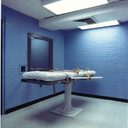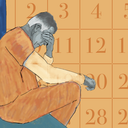
On December 15 an Illinois appellate court reversed Juan Rivera’s (pictured) conviction for a murder committed almost 20 years ago. The case is reminiscent of many in Illinois that led to the state’s abolition of the death penalty in 2011. Rivera was convicted and sentenced to life in prison for killing 11-year-old Holly Staker based on a confession after nearly 24 hours of near-constant interrogation. No physical evidence or witnesses conclusively linked him to the crime, and testing of DNA found on the victim, conducted in 2005, excluded him as the source. The reviewing court stated, “After viewing the evidence in the light most favorable to the prosecution, we hold that no rational trier of fact could have found the essential elements of the crime beyond a reasonable doubt. Because the State’s evidence was insufficient to establish guilt beyond a reasonable doubt, we must reverse the conviction of Juan A. Rivera, Jr.” Rivera’s case was highlighted in a recent New York Times Magazine article that noted there have been more than 250 exonerations through DNA testing, and nearly 76% of the original convictions were based on witness misidentification or flawed forensic evidence.
According to Illinois’s Center on Wrongful Convictions, which represented Rivera, his exoneration is the 98th in the state since 1989, including 18 from death row. Of the 98, 48 involved false confessions. When Illinois abolished the death penalty earlier this year, Governor Pat Quinn cited the risk of wrongful convictions as a key reason for repeal, saying, “Since our experience has shown that there is no way to design a perfect death penalty system, free from the numerous flaws that can lead to wrongful convictions or discriminatory treatment, I have concluded that the proper course of action is to abolish it. With our broken system, we cannot ensure justice is achieved in every case.”
(A. Martin, “The Prosecution’s Case Against DNA,” New York Times Magazine, November 25, 2011; newsletter and photo from Center on Wrongful Convictions, Dec. 15, 2011). See Innocence.



